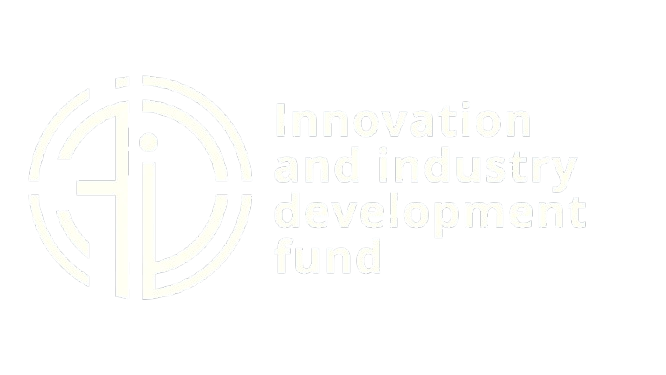
The Digital Dividend for Tajikistan: How Public Sector Automation Unlocks Economic Growth and Public Welfare
Tajikistan is at a pivotal moment in its development journey. With a young and growing population, significant potential in key sectors like agriculture and hydropower, and an ambitious national development agenda, the country is poised for a new wave of growth. Public sector automation is not merely a technological upgrade but a strategic lever that can unlock a “digital dividend,” driving economic prosperity, attracting foreign investment, and enhancing social development.
1. The Macroeconomic Impact: Boosting GDP and Economic Diversification
Tajikistan has demonstrated robust economic growth, with the economy expanding by a significant 8.4% in 2024, driven largely by remittance inflows [1] However, the economy remains vulnerable to external shocks due to its reliance on remittances (which accounted for approximately 49% of GDP in 2024) and an undiversified economic structure. [2]
Public sector automation can directly address this vulnerability by:
- Improving the Investment Climate: Simplifying bureaucratic procedures, licensing, and state registration for businesses through digital platforms creates a more attractive environment for both local and foreign investors. Case studies from other developing countries show that simplifying licensing and tax payments can significantly improve the ease of doing business, which directly boosts economic growth and attracts foreign direct investment (FDI).
- Enhancing Revenue Collection: Automating tax administration, customs, and other fee collection processes can increase the state’s revenue. By reducing human error and increasing transparency, a digital tax system ensures more accurate and efficient collection. [3] This can reduce the state’s reliance on external financing and provide more resources for public investment.
- Driving Sectoral Growth: Automation can revitalize key economic sectors. For example, a digital cadastre and land registry can make property transactions more transparent and secure, encouraging investment in real estate and agriculture. [4]E-procurement systems can reduce transactional costs, benefiting both the government and private sector suppliers, and leading to more efficient resource allocation. [5]
While comprehensive statistics on the direct impact of automation on Tajikistan’s GDP are still emerging, global research provides strong evidence. A study on e-government maturity in developing countries found that the Online Service Index (OSI) and Telecommunications Infrastructure Index (TII) have a significant positive relationship with GDP per capita. A 0.001 unit change in the OSI can lead to a $7.613 change in GDP per capita, while the same change in TII can result in a $15.03 change, demonstrating the powerful link between digital services and economic output. [6]
2. Attracting Foreign Direct Investment (FDI)
Foreign direct investment (FDI) inflows into Tajikistan remain low. [7] In 2023, FDI was only $0.14 billion, a decrease from $0.17 billion in 2022. [8]This is a critical area for improvement to fuel long-term, sustainable growth.
Public sector automation can be a powerful magnet for FDI:
- Increased Transparency: E-government platforms for public procurement, licensing, and business registration reduce opportunities for corruption and create a transparent playing field for foreign investors. [9]When investors see a transparent, rule-based system, their confidence in the market increases.
- Reduced Administrative Barriers: Automated processes drastically cut down on the time and costs associated with starting and running a business. [10] This efficiency is a key factor for foreign companies when choosing an investment destination.
- Improved Digital Infrastructure: Tajikistan is making strides in its digital infrastructure, with 6.07 million internet users at the start of 2025, representing a penetration rate of 56.8%. The number of mobile connections is high, reaching 10.8 million in early 2025. This growing connectivity provides a strong foundation for digital government services and signals to investors that the country is ready for the digital economy.
Tajikistan’s adoption of a National AI Development Strategy through 2040 in 2021, a first for Central Asia, further signals a commitment to technological advancement and a forward-looking approach that can attract innovative, tech-focused FDI. [11]
3. Enhancing Social Development and Citizen Welfare
The World Bank reports that poverty in Tajikistan has seen a significant decline, from 32% in 2009 to an estimated 9.1% in 2024 (at the international poverty line of $3.65 a day). [12] The government has set an ambitious goal to reduce the poverty level to 10% in the next seven years. Automation in the public sector is a vital tool to achieve this goal by improving the delivery of essential social services.
- Improved Social Assistance: As highlighted by UNICEF, the government’s Targeted Social Assistance program introduced an automatic indexation mechanism in 2023, which minimized errors and calculates benefits more accurately. This is a direct example of how automation ensures social aid reaches the right people efficiently and equitably.
- Increased Accessibility to Public Services: Digitalizing government services in areas like healthcare, education, and social security makes them more accessible to citizens, particularly in rural areas, where 71.3% of the population lived in early 2025. Online portals, chatbots, and mobile applications can provide 24/7 access to information and services, reducing the need for citizens to travel to physical offices. [13]
- Empowering Citizens: E-government promotes citizen engagement and transparency. [14] By providing online platforms for feedback and service requests, the government can become more responsive to the needs of its people, fostering trust and a sense of inclusion.
The statistics and global trends clearly demonstrate that public sector automation is not just an optional improvement but a strategic necessity for Tajikistan. By focusing on digitalization, the government can create a more competitive and transparent economy, attract crucial foreign investment, and, most importantly, deliver better, more equitable services to its citizens. The transition from a remittance-dependent model to a diversified, export-oriented economy requires structural reforms, and automation is at the heart of this transformation.
Your company, by providing expertise in this field, is uniquely positioned to help Tajikistan unlock this significant digital dividend. By aligning your services with the country’s national strategies and focusing on tangible benefits in economic growth, foreign investment, and social welfare, you can become a key partner in building a more prosperous and digitally-enabled future for Tajikistan.


